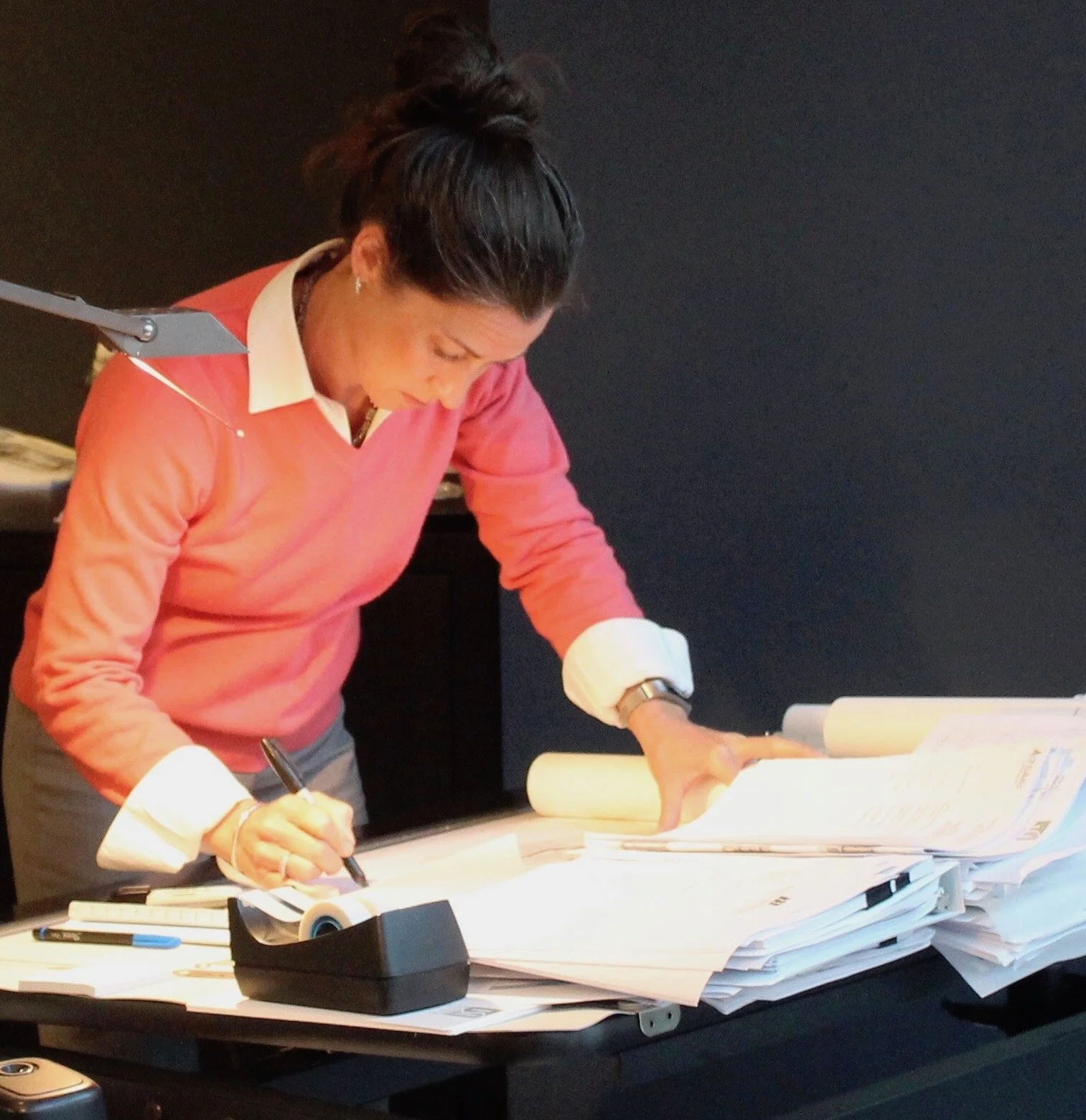Belief. Hope. Design. My Steps of Faith.
Catherine Monroe, AIA, LEED-AP
As an architect, I help clients articulate their visions, illustrating the possibilities and then identifying the steps necessary to build a new reality. This vision might be a master plan for an existing site or a design concept in three different sizes for a site yet to be acquired. I help our clients take stock in their own resources and together we map out what else is needed and the timeline necessary to build the vision.
I am called to use my professional skills for affordable, mixed-income housing, both at my day job and through my service work. Each step opens many new doors: my faith leads me as I follow God’s love for myself and for others.
My first step was attending a lecture at my church about the Opportunity Task Force Report. In 2017, Dr. Ophelia Garmon-Brown and Mr. Dee O’Dell spoke at Christ Episcopal Church about the disparities between my world as a white woman of privilege and those whose upward mobility is limited by segregation and lack of social capital. The report identified affordable housing as a critical element of creating economic mobility. I knew I could bring my God-given talents to work harder here.
Homelessness cannot be unseen. Income inequality cannot be unseen. I took my second step studying the need for more units of affordable housing. To me, the related issues of urban design and neighborhood affordability not only make a house a home, but also provide access to social capital for residents.
My third step was voicing this need to others. A client new to Charlotte asked my firm to design 250 units of market-rate housing for their land in the University City area. I asked -- simply asked -- “What about mixed income housing?” Our client voluntarily set aside five percent of their units for 60% AMI households, promising to keep rents at that level for at least fifteen years. No tax credits, no below-market loans, simply part of their rezoning process. Following this calling continually leads me to incredible people with big hearts, big brains, and fast feet.
My fourth step occurred on a train from Raleigh to Charlotte, traveling as Charlotte president for the American Institute of Architects (AIA) to the monthly NC AIA Board meetings.
I asked myself, “How can I use my God-given gifts to love my neighbor as myself?” Through local, state, and federal grants from the AIA, I had access to funding.
After hearing a compelling local podcast on grassroots efforts to create affordable housing, I cold-called a board member of the West Side Community Land Trust and asked, “How can we at the American Institute of Architects support what you are doing?”
In November 2019, the West Side Community Land Trust (WSCLT) is breaking ground in Enderley Park for a community place-making pavilion -- a generously-sized, covered porch suitable for a farmer’s market, musical performances, family reunions, and birthday parties. Rocking chairs and storage space. One freestanding wall as a backdrop for presentations, films, or displaying artwork.
The neighbors in Enderley Park voiced the idea for this pavilion during two “charrettes” -- an architectural design process that solicits community needs from the people already living there. This neighborhood faces displacement -- or what some call gentrification -- and the WSCLT focuses on preserving land to keep housing affordable. While this process plays out, the immediate need surfaced to create a safe space to preserve neighborhood connections.
Model of West Side Community Land Trust pavilion, courtesy of Marc Manack, UNC Charlotte College of Architecture
Volunteering to co-lead these charrettes and writing grants to AIA were my fifth step on this journey. A board member donated the land to WSCLT, which will operate the pavilion. Two UNC Charlotte professors and a team of students moved the design forward, planning construction every Tuesday as part of Marc Manack’s Fall Design Build Studio course. In addition to the AIA grants, building costs are underwritten by a Charlotte 250 city grant, celebrating Charlotte’s 250th birthday. Our city is rooted with so many people who are willing to look beyond themselves to those most in need and to take action.
Individual people and organizations have been inspirational, brave, kind, and imaginative, refusing to stop. Many of these people have never been interviewed by a newspaper or captured by a film crew, but they are true leaders, the Charlotte for us to embrace and emulate.
These steps created a path forward for myself, together with others in my community who became their better selves. This is a path forward for others with God-given gifts to accomplish both the American ideal of “a more perfect Union” and the words of the Lord’s Prayer “Thy Will be done, on Earth as it is in Heaven.” This is the source of my belief, faith, and hope for housing that leads to broader opportunities for all Charlotteans.
Catherine M.T. Monroe, AIA, LEED-AP, is a licensed architect and a member of the Housing Studio team. She sees design problems through the eyes of the community first, including both neighborhood and environmental impact. She received the AIA North Carolina J. Hyatt Hammond Award and served as President of AIA Charlotte.


